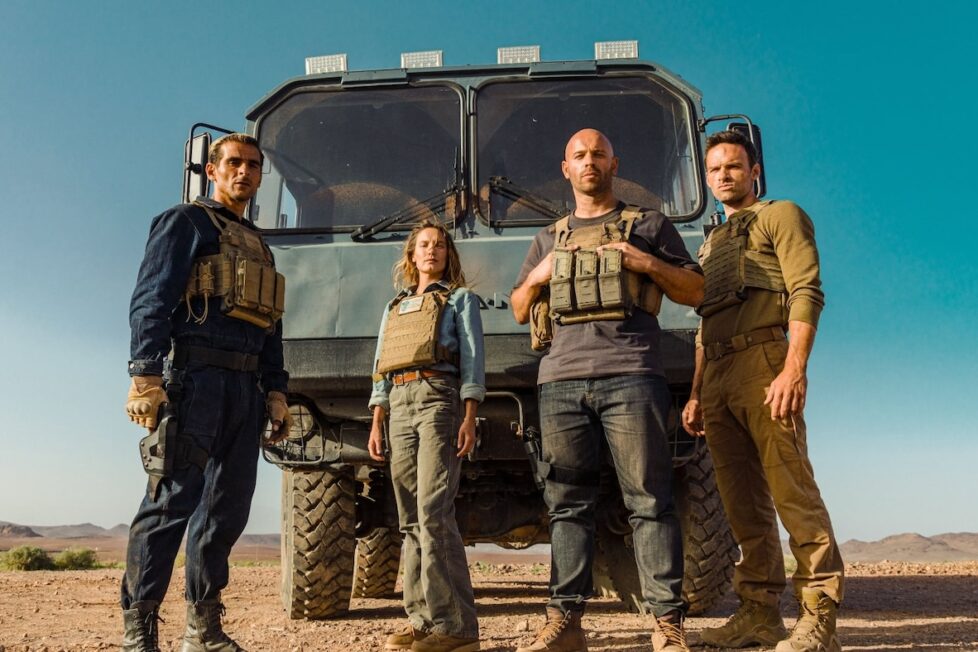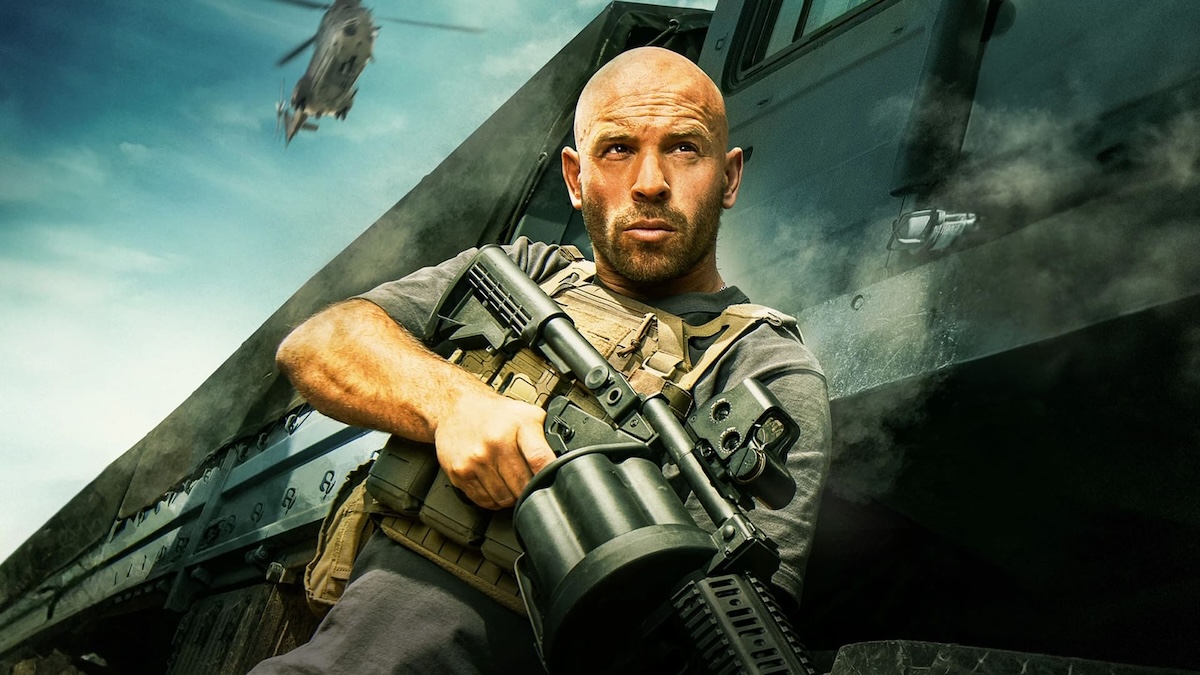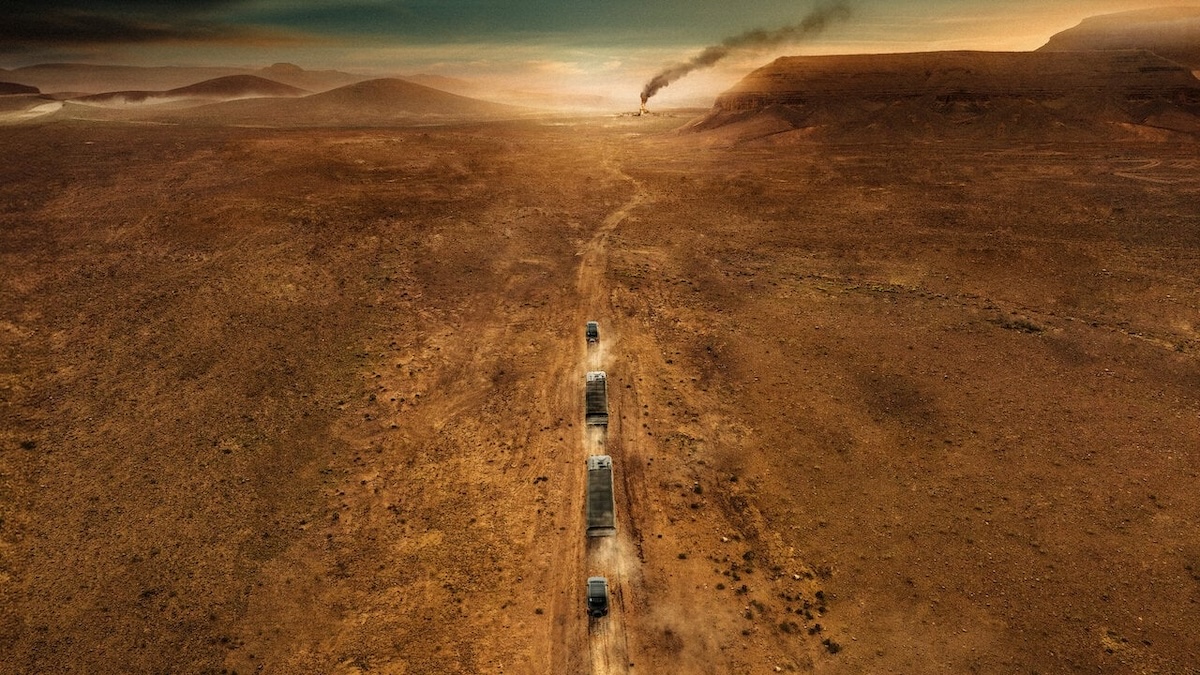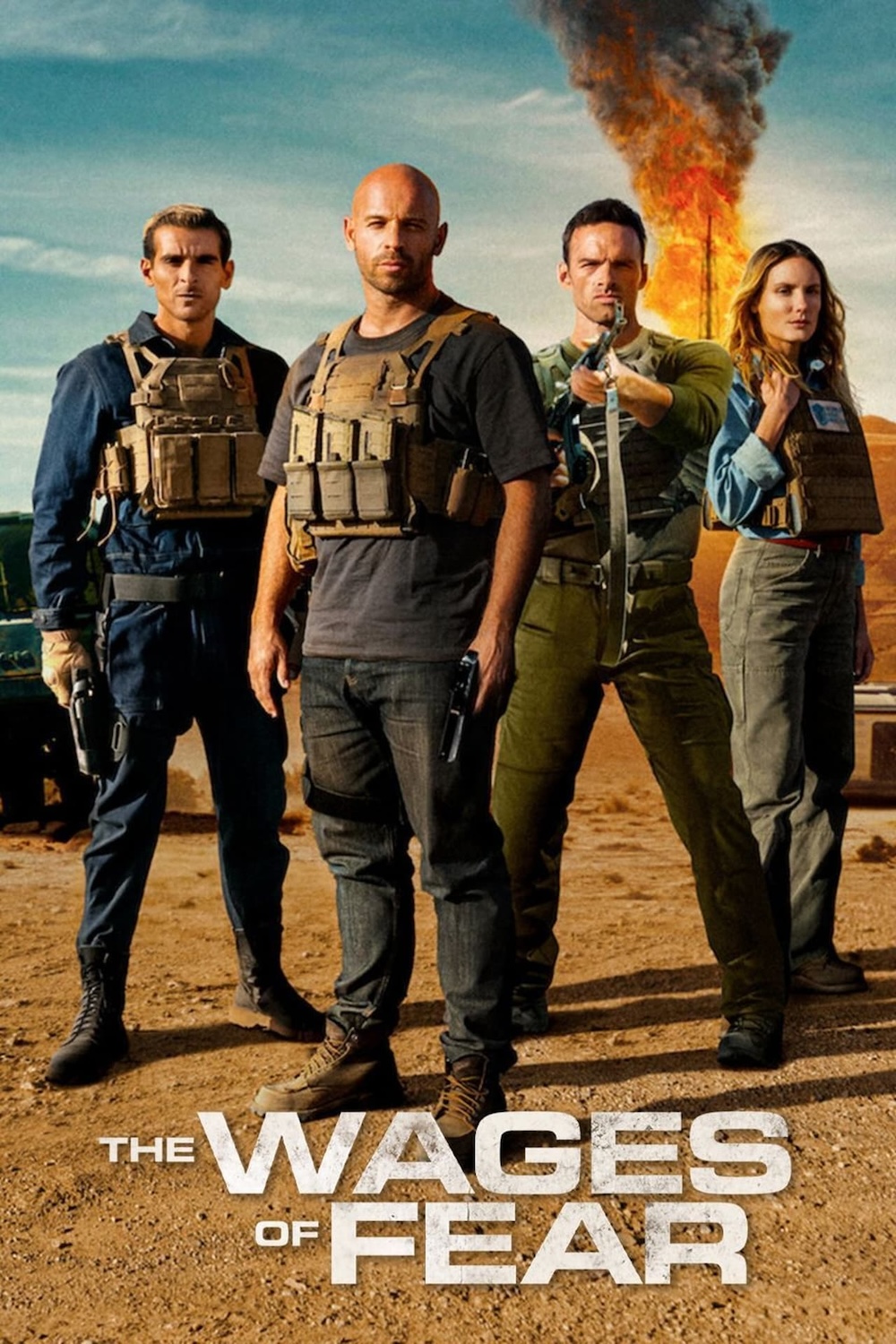THE WAGES OF FEAR (2024)
In order to prevent a deadly explosion, a crack team has 24 hours to drive two truckloads of nitroglycerine across a desert laden with danger.

In order to prevent a deadly explosion, a crack team has 24 hours to drive two truckloads of nitroglycerine across a desert laden with danger.


Julien Leclercq’s The Wages of Fear / Le salaire de la peur makes a strong point in its opening credits of stating it’s based on the 1953 film by Henri-Georges Clouzot, but only “freely adapted” from Georges Arnaud’s slightly earlier novel, Le Salaire de la Peur. In truth, however, it’s a very loose adaptation of the film too—borrowing some of the premise and a few scenes, but not developing them significantly. The result is a below-average action thriller where the supposed Clouzot connection will only irritate fans of the original.
The novel, the Clouzot film, and William Friedkin’s remake Sorcerer (1977)—the latter a flop that has since garnered a cult following—were all set in various parts of Latin America (Guatemala for the book, Colombia for Friedkin, unspecified for Clouzot). Leclercq, however, transposes the action to an unnamed Middle Eastern country and begins as he means to go on, with gunfire: two vehicles are pursued by a third firing upon them until they reach the safety of a village.
The drivers are then revealed to be Clara (Ana Girardot), a doctor, and Fred (Franck Gastambide), both white and French. The Wages of Fear is a Middle Eastern-set film where the locals play virtually no role. Here, it’s the Europeans who save the village from disaster, while its residents do nothing but gawp and pray. To be fair, the locals are also relatively unimportant in the Clouzot and Friedkin films, but they’re not depicted as helpless victims either.
Back in the village, Clara and Fred promptly have sex, presumably to establish a personal dimension to the plot that—like so many story elements in Leclercq’s Wages of Fear—will come to nought. The film then dives into a flashback set nine months earlier, apparently in the capital city of the same country during a coup d’état. Here, we meet other characters, including Fred’s brother Alex (Alban Lenoir), a demolition expert, and we also discover that Fred’s some kind of professional bodyguard-cum-fixer.
There’s some more shooting in this flashback, but its real purpose is to set up a rather pointless subplot that involves Alex being sent to prison and, surprise surprise, getting into violent brawls. As with the Clara-Fred relationship, the Fred-Alex family connection seems like it’s going to be important, but adds very little to the film; events would unfold in pretty much the same way without it.

All this takes a while. To be fair (again), Clouzot’s lengthy introduction to the 1953 film can try the viewer’s patience—it’s around an hour before he gets down to business. But even if it feels aimless at times, it’s certainly atmospheric and establishes the isolation and desperation of the key characters, providing important context for their actions later. Leclercq’s background-building, by contrast, takes only around 25 minutes, yet it seems just as long as Clouzot’s while adding far less dramatic value.
Finally, nitroglycerin is mentioned, and the story proper can begin. An oil well just outside the village is on fire. If it’s not extinguished, an underground gas pocket will blow the village up. The only solution is to detonate the well itself with nitroglycerin. However, 200 kilograms of the highly unstable substance will need to be transported across 800 kilometres of desert, much of it bandit territory, by Clara, Fred, Alex, and a few others, all posing as aid workers.
So off they set, a larger team than in Clouzot’s film (with two lorries, three cars, and a motorbike—and later a dune buggy for no apparent reason other than it looks cool—against Clouzot’s four men in a pair of lorries). And they mostly are a team, a big difference from the original film’s loners thrown together by circumstance.
There are little nods to Clouzot’s film—Fred saying that he prefers Paris to the Middle East, for example, or a scene in which a drop of nitroglycerin falls to the floor and explodes spectacularly. And after about 90 minutes, two of Clouzot’s big sequences are perfunctorily recreated: a huge rock blocking the road, and a pool of oil doing the same. But they are dispensed with very quickly, as if only there so that Leclercq’s film can claim a relationship with its predecessor; where Clouzot depicts the preparations for blasting the rock in great detail, so every moment of the operation builds up suspense, Leclercq passes over them as quickly as possible.
Clouzot’s film followed the lorries inch by agonising inch, never letting the audience forget that a small bump in the road could blow them to smithereens. In Leclercq’s, despite occasional shots of the cargo and an intermittent on-screen countdown, the whole nitroglycerin story is really just an excuse for (and filler between) gunfights. It’s significant that the only truly tense scene in this version of The Wages of Fear, where the convoy drives into a minefield, has nothing at all to do with what they’re carrying.
Shot (predictably enough) in Morocco with the usual Netflix gloss, The Wages of Fear looks good and the action is as efficiently handled as you’d expect from a director with Leclercq’s experience of the genre. However, it’s rarely thrilling. Yet action is almost all that’s on offer; even the main characters have only the flimsiest of personalities, so although it’s fairly easy to guess who’ll make it to the end, there’s little reason to care anyway.

Gastambide is competently bland in the lead role, as he was in Restless (2022). His resemblance to Vin Diesel is often remarked upon, but he also possesses a touch of Yves Montand’s manner from the Clouzot film. Girardot’s primary acting task is to appear pensive when characters die, presumably because doctors (or perhaps women?) find this more unsettling than the rest of us. There’s little to say about the other performances (and Éric Serra’s occasionally sentimental score), although Sofiane Zermani (as security guard Gauthier) and Astrid Whettnall (as an oil executive) at least have some screen presence.
Perhaps credibility shouldn’t be a strong suit of a film like this, but there are still some niggling plot holes. Why doesn’t the convoy simply pay the bandits to traverse their territory? (Answer: because then there wouldn’t be a shootout.) Why is there a fight at the solar farm where the nitroglycerin is stored? (Answer: so that there can be an explosion.) Why was Fred chosen for the mission in the first place? (Answer: because nobody else could be found to do it, a decidedly weak foundation for the entire plot.)
Also, if Fred is an expert at extracting people from dangerous countries, as the flashback implies, why is he (along with Alex’s family) still stuck in this one? And why is Alex, who earlier warned of the terrible fate awaiting mere thieves in this part of the world, only serving a prison sentence for the far worse crime of killing a police officer? And so on.
The biggest issue, however, is that the film forgets about the nitroglycerin for long stretches, becoming overly focused on the bandit threat. Leclercq’s Wages of Fear invites comparison with the Clouzot film, but loses what works so well in it—raising suspicions about whether the entire “remake” act is merely a marketing ploy. It fails to replace this with anything of value. It resembles the 1953 film far less than Sorcerer, and even less than other films it has influenced, such as Hell Drivers (1957), Violent Road (1958), and The Ice Road (2021). Indeed, it’s worse than The Ice Road, which is quite a damning statement.
Perhaps that’s unsurprising. I wrote of Leclercq’s Sentinelle (2022) that “though many of the locations are interesting, nothing else is”, and the same applies here.
FRANCE | 2024 | 104 MINUTES | 2.35:1 | COLOUR | FRENCH


director: Julien Leclercq.
writers: Hamid Hlioua & Julien Leclercq (based on the 1953 film written by Henri-Georges Clouzot & Jérome Geronimi, and the 1950 novel by Georges Arnaud).
starring: Franck Gastambide, Alban Lenoir, Sofiane Zermani & Ana Girardot.
